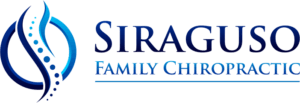Thoracic Outlet Syndrome
Thoracic outlet syndrome is used to describe a group of disorders that affect the lower neck, shoulder, arm, and upper chest area. It is caused because of an impingement and irritation to a bundle of blood vessels and nerves called the brachial plexus that run from the neck into the arm. Thoracic outlet syndrome affects people of all ages, but is more common among athletes who participate in sports that require repeated motions of the arm and shoulder. For example, people who play volleyball, swimming, baseball and other such sports suffer from thoracic outlet syndrome. Recent studies have shown that it is more common in women compared to men; particularly in women who have poor posture and muscular underdevelopment. A Thoracic Outlet impingement can come from several different areas compressing onto the brachial plexus, but the most common areas are: Anterior and posterior scalene, 1st rib, pec minor, clavicle, or axillary impingement from a shoulder dislocation.
Signs and Symptoms of Thoracic Outlet Syndrome
Signs and symptoms include numbness and impaired circulation in the arm, shoulder and neck. The pain is sometimes confused with pain of angina which is a symptom of a heart attack. However, the two pains can be distinguished because thoracic outlet syndrome pain does not increase while walking, whereas, angina pain does. The signs and symptoms of thoracic outlet syndrome differ depending on the part of the body that is affected. The condition most commonly affects nerves but can also affect arteries and veins. Arteries are least commonly affected in thoracic outlet syndrome.
Chiropractic care for thoracic outlet syndrome
Chiropractic treatment for Thoracic Outlet Syndrome includes manual manipulation, passive and active mobilization of the neck and shoulder, and postural corrective exercises. The goal is to relieve pressure off of the nerve artery or vein to decrease the pain, numbness, tingling, or weakness.
Manual Manipulation
Manual manipulation involves the chiropractor using a high velocity low amplitude adjustment to the joint to restore motion and takes pressure off of the affected area.
Passive and Active Mobilization
Mobilization involves moving a joint or an area of the body gently passed its physiological end play to help restore motion in the joint and stretch muscles that may be tight and causing the impingement.
Postural Corrective Exercises
Corrective exercises can be used to strengthen muscles that are weak and help stretch muscles that are tight to correct posture thereby relieving the impingement on the nerves and vessels. For this particular condition the patient would likely want to strengthen the deep neck flexors, lower trapezius, and rhomboid muscles. The patient would benefit from stretching the suboccipital muscles, upper trapezius, scalenes, sternocleidomastoids, and levator scapula.
At Home therapy
It is important to note that if your pain and symptoms are worse at night then your pillow or mattress may be contributing to the problem. See our article on Best Pillows For Neck Pain. Changing your pillow might be beneficial for this condition.
Schedule an Appointment
If you or any of your loved ones would like to schedule an appointment Click Here!

